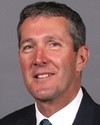I'll start, and we'll let Paul finish up if he has additional comments.
The prevention and deterrence functions are mutually reinforcing. So if we can detect and help law enforcement to increase their investigations and prosecutions; if we can put in place, with our reporting entities, the means by which you can't walk around with hockey bags full of criminal proceeds and deposit them without reporting; if we can put in place mechanisms whereby those on the front line, and they know best, have a place to report transactions about which they're suspicious, about which there's something not quite right--and we can look across the financial services sectors, it's not just one bank or one money services business, it's combinations of banks, money services businesses, casinos--if we can put together mechanisms such as those, we deter.
We also use public awareness. We reach lots of reporting entities. The public goes to those reporting entities to do their banking. It's become much more apparent, I think, over the last four years that there are rules and regulations and there's the ability for Canadian law enforcement to follow the trail when it is criminal proceeds.




